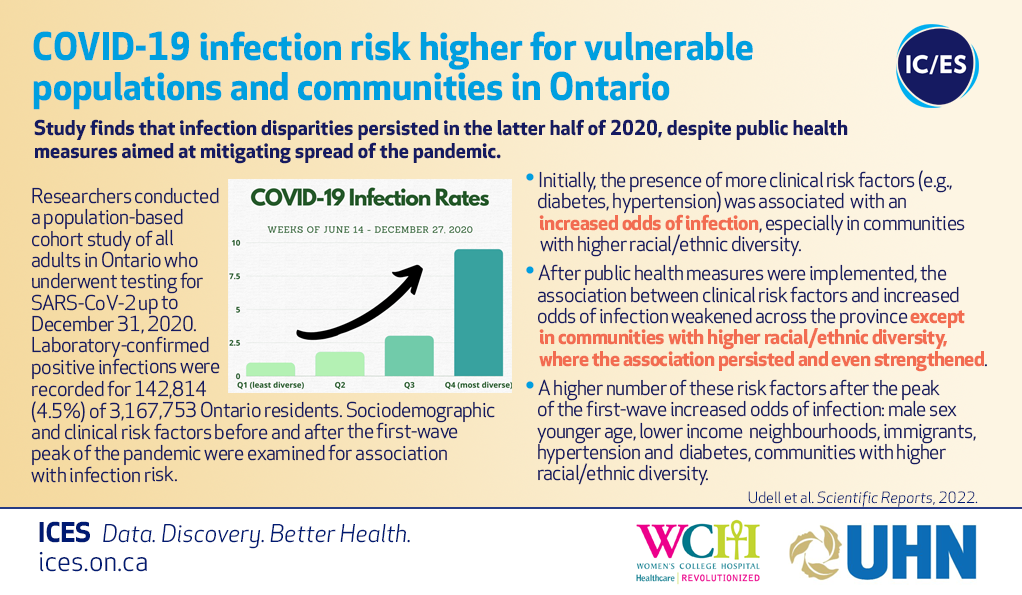New research from Women’s College Hospital finds that COVID-19 infection disparities persisted in the latter half of 2020, despite public health measures.
A new study in Scientific Reports led by Women’s College Hospital cardiologist Dr. Jay Udell shows that despite public health measures aimed at mitigating the spread of COVID-19, infection disparities persisted in diverse communities in Ontario the latter half of 2020.

The research team conducted a population-based cohort study of all adults in Ontario who tested for SARS-CoV2 up to December 31, 2020. Laboratory-confirmed positive COVID-19 infections were recorded for 4.5 percent of Ontario residents. Sociodemographic and clinical (diabetes or hypertension, for example) risk factors before and after the first wave were examined for association with infection risk.
Initially, the presence of clinical risk factors was associated with increased risk of COVID-19 infection, especially in communities with higher racial and ethnic diversity. After public health measures were implemented, the associated between clinical risk factors and risk of infection weakened except in communities with higher racial/ethnic diversity, where the associated persisted and even strengthened.
Despite the impact of the provincial lockdown following the peak of the first wave of the pandemic in early April 2020, the highest likelihood of COVID-19 was among people with a younger age, male sex, as well as individuals that immigrated to Canada, those with hypertension or diabetes and thos residing the the most racially/ethnic diverse, urban, socioeconomically disadvantaged communities in Ontario. Going forward, these findings can help inform public health policy and prevention measures to better protect these highest risk individuals in these communities.